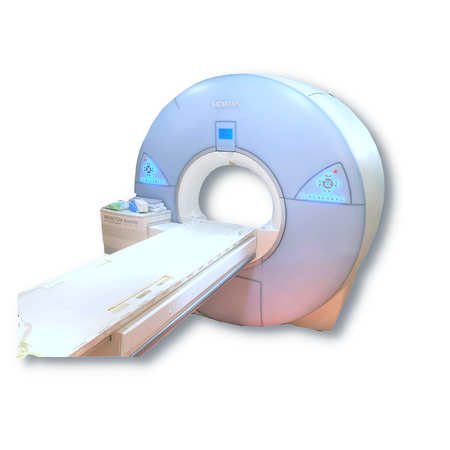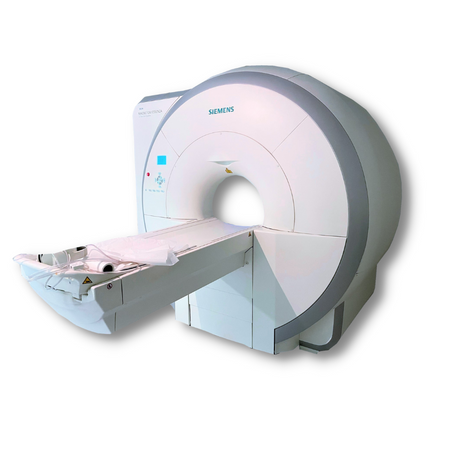What Is TIM in MRI and How Does It Differ from TIM + DOT?
When choosing an MRI system it can be difficult to decide what features and options you need. For example, you may wonder whether you want an MRI with Total Imaging Matrix (TIM) or a Daily Optimization Throughput (DOT) upgrade, or even both.
But, what is TIM in MRI and what is DOT in MRI?
TIM means that the MRI is fully digital and that it is optimized to create incredible images with top quality resolution. The DOT upgrade in MRIs is a feature meant to make everyday exams easier through personalization.
In this short and simple blog post, we explain the TIM and DOT systems in more detail. This is to ensure that you have the best conditions for choosing the right system for you.
We walk you through everything from the benefits of these features to examples of great TIM and DOT MRI machines.
Sounds interesting?
Just get reading.
Before you dive into this blog post, take a look here.
You can sign up for our e-mail course that will take you through all the important steps of choosing the right MRI for your needs.
Learn how to choose the right MRI for you – Just sign up here

What is TIM in MRI?
What is TIM in MRI?
Total Imaging Matrix, commonly known as TIM, is an integrated coil system that enables you to perform full body scans rather fast and easily, as there is no need for repositioning of the individual patients.
Plus, because you can scan the entire body at once, you do not have to think about changing coils or doing multiple exams on the same patient.
You will quickly notice that one of the benefits of this feature is higher image quality due to the higher signal-to-noise ratio (SNR) in the TIM MRIs. A high SNR supports the production of images of higher quality as the signal is not disturbed by any so-called noise.
Thus you get clearer images that allow for confident diagnostics.
Examples of machines that can support the TIM technology are the Siemens Magnetom Avanto 1.5T and the Siemens Magnetom Essenza 1.5T.
MRI Matrix Coils
When buying a TIM MRI, it is important to ensure that the machine has matrix coils as well. This is because matrix coils are what supports the TIM feature in such a way that together they provide high quality imagery.
The matrix coils have many elements and a larger matrix. More elements essentially means that the system has more channels and thus more connectors.
Overall, this means that there will be a higher density of pixels. This provides better spatial and temporal resolution. So, you get better image quality and SNR.
Remember that not all coils are TIM — that is, they are not all matrix coils. To get the full benefit of TIM you need a matrix coil. Thus, you need to be aware of your needs before purchasing your next system.
If you are interested in finding a TIM MRI, you can look into Siemens systems. All machines from Siemens from 2004 and up are total imaging matrix systems.
As we mentioned earlier, it is also possible to get your hands on an MRI machine that has been upgraded with DOT technology.

Daily Optimization Throughput (DOT)
But, what is DOT in MRI?
DOT stands for Daily Optimization Throughput.
Optimized throughput means that your productivity and efficiency will increase as you can get through more patient examinations during the work day.
With a DOT upgrade you can be sure that you get consistent scan results whether you are an experienced radiologist or if you are a new technologist.
This means that no matter what, you can perform exams with confidence.
A reason for the high consistency of this machine is what Siemens calls engines. The engines are optimized applications which are preset and personalized to fit each patient that comes through your examination room.
Not only does this system promise you great productivity with consistent scan results of high quality, it also offers user-friendly navigation.
This is because there is no need for custom made protocols which would require more experienced and highly skilled technologists.
The Siemens Magnetom Avanto 1.5T and the Siemens Magnetom Essenza 1.5T MRI’s can both be manufactured with DOT, or be DOT upgraded.
This means that both systems can be either upgraded from TIM to TIM and DOT, or they can come with both of these features.
Finally, there is another point to consider when looking for your next system. All DOT upgraded machines are TIM, however not all TIM machines are DOT upgraded.
Of course, it is possible to get systems that have both features, you just need to keep an eye out for it to avoid any unfortunate situations.
Sum up
Now that we have gone over all the important points about ‘what is TIM in MRI?’ and ‘what is DOT in MRI?’, let us sum up.
What is TIM in MRI (Total Imaging Matrix)?
This technology in Siemens MRIs is highly convenient for everyday operations thanks to its integrated coil system that allows you to easily do full-body scans in no time at all.
This is because there is no need for repositioning of patients during exams.
Also, you can be sure that the image quality in the TIM systems is impeccable, which further supports doctors in making confident diagnostics.
What is DOT in MRI (Daily Optimization Throughput)?
What MRIs have TIM and DOT features?
This rounds up this short blog post. Hopefully, now that you know the answer to what is TIM in MRI and what is DOT in MRI, you feel more prepared for your next MRI purchase.
If you are curious to learn more about MRIs, we suggest you read more MRI blog posts. Either, you can get familiar with our guide to MRI scanners, or you can dive into how much an MRI machine costs.